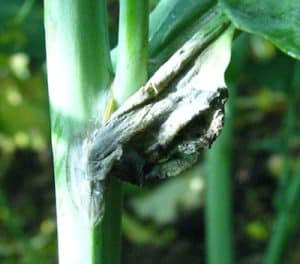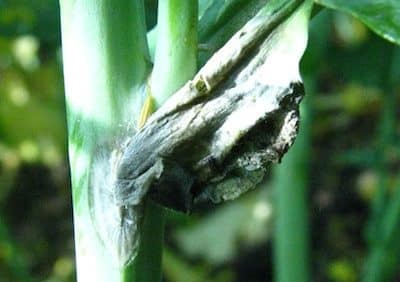Moisture in the two weeks before flowering, during flowering and in the two weeks after flowering may create prime conditions for heavy sclerotinia stem rot infection.

Early dry weather doesn’t matter as much as long as you have moisture within the canopy leading up to and during the flowering period.
It takes 14 to 21 days of continuous soil moisture (in the top layer of the soil) to move the sclerotinia cycle from sclerotia germination to apothecia emergence to spore release. A humid closed canopy is often enough. Rainfall is not always necessary as long as soil was moistened and stays moist, resulting in humid conditions within the crop canopy. A dense crop canopy can hold in moisture and create conducive conditions for disease development.
If the environment and the microenvironment within the crop canopy stay dry, the risk of sclerotinia will be low since high moisture conditions are required throughout the disease cycle (apothecia development, petal infection, petal sticking and lesion development).
If conditions were dry, then turned wet, the sclerotinia risk depends on when this transition occurred. If the environment stays dry and then we get moisture close to flowering, we could be in a situation where the highest risk for disease development will occur later. This may justify a spray at 30-50% flower (late window) instead of 20-30% flower (early window).
Further reading:
Sclerotinia stem rot: Risk factors and spray timing
When to spray crops with non-uniform growth stages
Sclerotinia stem rot risk: The basics
